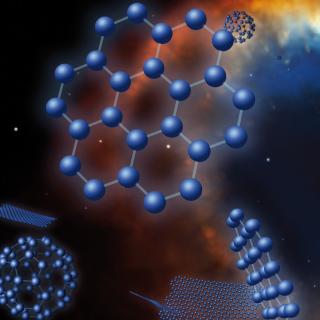Barbuy, B.; Ernandes, H.; Friaça, A. C. S.; Camargo, M. S.; da Silva, P.; Souza, S. O.; Masseron, T.; Brauner, M.; García-Hernández, D. A.; Fernández-Trincado, J. G.; Cunha, K.; Smith, V. V.; Pérez-Villegas, A.; Chiappini, C.; Queiroz, A. B. A.; Santiago, B. X.; Beers, T. C.; Anders, F.; Schiavon, R. P.; Valentini, M.; Minniti, D.; Geisler, D.; Souto, D.; Placco, V. M.; Zoccali, M.; Feltzing, S.; Schultheis, M.; Nitschelm, C.
Referencia bibliográfica
Astronomy and Astrophysics
Fecha de publicación:
8
2025
Revista
Número de citas
1
Número de citas referidas
1
Descripción
Context. We have previously studied several elements in 58 selected bulge spheroid stars, based on spectral lines in the H band. We now derive the abundances of the less studied elements phosphorus (P; Z=15), sulphur (S; Z=16), and potassium (K; Z=19). Aims. The abundances of P, S, and K in 58 bulge spheroid stars are compared both with the results of a previous analysis of the data from the Apache Point Observatory Galactic Evolution Experiment (APOGEE), and with a few available studies of these elements. Methods. We derived the individual abundances through spectral synthesis, using the stellar physical parameters available for our sample from the DR17 release of the APOGEE project. We provide recommendations for the best lines to be used for the studied elements among those in the H-band. We also compare the present results, together with literature data, with chemical-evolution models. Finally, the neutrino-process was taken into account for the suitable fit to the odd-Z elements P and K. Results. We confirm that the H-band has useful lines for the derivation of the elements P, S, and K in moderately metal-poor stars. The abundances, plotted together with literature results from high-resolution spectroscopy, indicate that moderately enhanced phosphorus stars are found, reminiscent of results obtained for thick disc and halo stars of metallicity [Fe/H]≈‑1.0. Therefore, for the first time, we identify that this effect occurs in the old stars from the bulge spheroid. Sulphur is an α-element and behaves as such. Potassium and sulphur both exhibit some star-to-star scatter, but fit within the expectations of chemical evolution models.
Proyectos relacionados

Nucleosíntesis y procesos moleculares en los últimos estados de la evolución estelar
Las estrellas de masa baja e intermedia (M < 8 masas solares, Ms) representan la mayoría de estrellas en el Cosmos y terminan sus vidas en la Rama Asintótica de las Gigantes (AGB) - justo antes de formar Nebulosas Planetarias (NPs) - cuando experimentan procesos nucleosintéticos y moleculares complejos. Las estrellas AGB son importantes
Domingo Aníbal
García Hernández